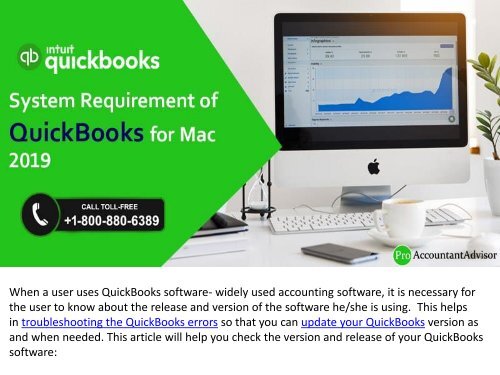Non-profit organization serving the online community by providing old versions of various programs. MinixMac is a basic emulator of very old macs, and I was able to get lots of my Mac OS 9 software up and running in the SheepShaver emulator. (A more likely use case than writing your next novel in. Powerful Mac apps that won't break the bank. There’s something of a misconception when it comes.
Are you the owner of a truly old Mac (for example, a PowerBook running Snow Leopard, the very first iMac with Tiger, LC 475 with System 7.0.1, Quadra 800 with Mac OS 9 or Macintosh SE on System 6)? Then sooner or later you will need to download the operating system for your “old man”. But where to find it?
Older Versions of OS X and macOS
The first instance in such cases is the corresponding page on the official Apple support site. Of course, you can find only proprietary, apple software on it – iMovie, Pages, Keynote, iLife, old system updates for OS X, firmware updates and security updates, previous versions of iTunes and QuickTime, etc. Try to find the necessary software on this page – and you will almost certainly be lucky.
Older Software – for Classic Mac OS, PowerPC, 040, etc
Well, with Apple “AD” software, as we showed above, things are pretty simple. But what to do if you have a really old device? For example, on Mac OS 8 or 9, or running System 7.5.2 and System 7.6.1? What about applications for PowerPC processors, 68040 and 68030? You can be helped by our collection of links – just please do not forget that, at present, all these applications are not supported by anyone (including Apple), and therefore no one releases updates for them.
Read more: How to Reset Mac to Factory Settings?
On the other hand, they should (in theory) work fine on the good old Macs – Bondi Blue iMac, G4 Cube, Macintosh SE/30, Performa 6220, iBook, PowerBook 2400 and other “pre-Intel” Macs.
This collection is also useful for fans of retro-emulators, as well as for those who, for whatever reason, needed to run very “old” software – for example, you can use Mini vMac, Basilisk or SheepShaver to emulate on your modern “poppy” System 7. And if you don’t want to “bother” too much with emulation, but still you would not mind looking at “how it was before,” there are old systems emulators in the browser — Hypercard and Mac Plus.
The old software for the old Mac “weighs” very little (for example, Photoshop – less than 1 MB). But transferring them to “ancient” computers may not be an easy task! Often, users simply make an FTP server on a modern Mac and install an FTP client like Fetch or Archie on an old Mac, and with their help transfer the archive with the file to the old computer. Of course, if the “old man” has the ability to connect to the Internet or read physical media (SD memory card, CD/DVD-ROM or external hard disk) even with the help of an adapter, this problem is eliminated.
Conclusion
I hope this article will help you to revive old equipment from Apple. Despite the years I’m sure these “old men” can still perform basic tasks and in the end they are very archaic and cool!
How to get updates for macOS Mojave or later
Download Old Versions Of Mac Os

If you've upgraded to macOS Mojave or later, follow these steps to keep it up to date:

- Choose System Preferences from the Apple menu , then click Software Update to check for updates.
- If any updates are available, click the Update Now button to install them. Or click ”More info” to see details about each update and select specific updates to install.
- When Software Update says that your Mac is up to date, the installed version of macOS and all of its apps are also up to date. That includes Safari, iTunes, Books, Messages, Mail, Calendar, Photos, and FaceTime.
To find updates for iMovie, Garageband, Pages, Numbers, Keynote, and other apps that were downloaded separately from the App Store, open the App Store on your Mac, then click the Updates tab.
To automatically install macOS updates in the future, including apps that were downloaded separately from the App Store, select ”Automatically keep my Mac up to date.” Your Mac will notify you when updates require it to restart, so you can always choose to install those later.
Mac Os X Version Names
How to get updates for earlier macOS versions
If you're using an earlier macOS, such as macOS High Sierra, Sierra, El Capitan, or earlier,* follow these steps to keep it up to date:
- Open the App Store app on your Mac.
- Click Updates in the App Store toolbar.
- Use the Update buttons to download and install any updates listed.
- When the App Store shows no more updates, the installed version of macOS and all of its apps are up to date. That includes Safari, iTunes, iBooks, Messages, Mail, Calendar, Photos, and FaceTime. Later versions may be available by upgrading your macOS.
To automatically download updates in the future, choose Apple menu > System Preferences, click App Store, then select ”Download newly available updates in the background.” Your Mac will notify you when updates are ready to install.
* If you're using OS X Lion or Snow Leopard, get OS X updates by choosing Apple menu > Software Update.
How to get updates for iOS
Learn how to update your iPhone, iPad, or iPod touch to the latest version of iOS.
Learn more
- Learn how to upgrade to the latest version of macOS.
- Find out which macOS your Mac is using.
- You can redownload apps that you previously downloaded from the App Store.
- Your Mac doesn't automatically download large updates when it's using a Personal Hotspot.
